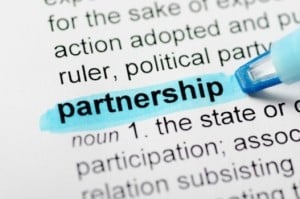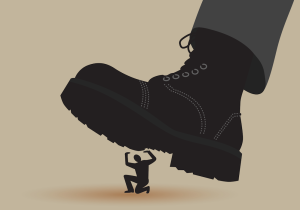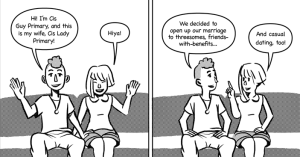You know the old adage, “If you’re not angry, you’re not paying attention?” This feels particularly applicable at this political moment in the US.
The anger often begins the moment you turn on the radio, open up a newspaper, or log into social media in the morning. And it can stay with you until the last few moments of wakefulness – and, if you’re like me, even pervade your dreams.
The weeks since Trump took office have been particularly disheartening.
Staying informed has meant, for many of us, feeling overwhelmed by anger for much of the time. And most of us have already started to feel that anger’s effects on our bodies, our emotional health, and our relationships.
There’s no doubt that the next four years are going to be – among other things – emotionally exhausting. If we don’t take care of ourselves, we’re going to burn out fast.
But we also need to find ways to maintain our outrage in a sustainable way.
If our outrage isn’t sustainable, we may lose our righteous anger. We may numb ourselves to the daily realities of oppression. We may find that we’re no longer shocked when we wake up to read about the latest attack on immigrants or civil liberties.
And that’s scary, because when that happens, we stop resisting.
So how can we stay informed and continue to be outraged by what’s happening in our world without burning out?
How do we maintain our necessary anger without hurting ourselves and those around us? How can we build a sustainable relationship with our personal and collective outrage?
These strategies can help.
1. Recognize That Your Anger Is Valid
Anger is a necessary and natural reaction to the terrifying things happening in our world under a Trump presidency.
And yet, many of us have been taught that anger is a “bad” emotion, that it’s shameful or a reflection of our inability to “control” ourselves.
Anger is also treated in our culture as a particularly masculine expression of emotion. Women are often taught to turn anger inward, while outward expressions of sadness or anxiety are more culturally accepted as feminine.
For people of color, Black people in particular, expressing anger can be dangerous, and is often read by white people in power, as well as by police, as threatening.
Anger is powerful.
Our expression of it is based not only in our relationship to ourselves and others, but also by how the world views our anger through the lens of oppression, such as sexism and racism.
Because of this, our anger may be bound up with shame or fear of how we’re perceived, and our reaction may be to avoid feeling it, to try to numb it, or to turn it inward on ourselves.
When society tells us that our anger is invalid or dangerous due to our identities, it can be incredibly difficult to see our anger as a valid, healthy, and intelligent response to systems of oppression and violence.
But anger – especially in response to an oppressive political regime – is beautiful in that it shows us where our passion lies and moves us to action. It can help us overcome fears and build our confidence, fueling our collective resistance.
Outrage signifies to our communities that we care about what happens to each another.
2. Increase Self-Awareness and Embrace Your Anger
When we’re overwhelmed by anger at our political system, it can be difficult to have the clarity needed to take political action to change those very systems.
We may search for ways to relieve our frustration rather than a way to resolve a conflict or an injustice. When we feel powerless to affect change, we may find small things we can control, like the actions of those around us.
The trauma of systemic injustice affects the mental health and interpersonal relationships of everyone affected by those systems, and disrupting these toxic effects begins with building self-awareness around our emotions.
This starts with the simple, yet difficult, act of observing what happens internally when we start to feel a strong thought or emotion. See if you can give this a try next time you feel angry:
- As soon as you notice anger start to arise, stop what you’re doing for a moment.
- Close your eyes if that feels okay.
- Notice if you’re holding your breath or taking shallow breaths.
- Take a few slow, deep breaths in and out, and just observe.
Notice if you have an immediate desire to try to avoid feeling angry, or if secondary emotions like shame, guilt, or blame show up. Notice where you feel the anger in your body, where the anger hurts. Notice what thoughts are running through your mind and pay attention to what they might be trying to tell you.
See if you can step out from behind the response of shame or blame, and just be curious about where the feelings of anger came from, noticing what your impulse to react is telling you. Perhaps your anger is rooted in fear, or anxiety about the future. Be curious about the vulnerability of your anger.
Remind yourself that your anger is valid, and that you are not alone in feeling angry. Remember that other passionate activists, most of whom you don’t even know, also see this injustice, and are angry with you.
Continue to take long, slow breaths, and consider – with intention – how you’d like to respond. Consider what actions you’d like to take to honor your anger, and respond to its source.
The above practice of building awareness of our emotions, and reacting with intention, comes from the practice of mindfulness, which is rooted in both Buddhist and Jewish traditions.
To learn more about a mindful approach to anger, explore the writings of Buddhist monk and peace activist Thich Nhat Hanh, or the podcasts of meditation teacher Tara Brach. Both speak about embracing our anger as we would a friend, seeking to understand its needs and giving it great care and attention.
Another great resource is a new blog by psychologist and activist Megan Clapp, who also applies a mindfulness approach to radical activism.
3. Be Intentional About Where You Place Your Energy
We’re facing an enormous battle with so many different areas of focus and attention.
In this work, it’s easy to feel overwhelmed by the sheer enormity of it all. We want to know everything, do everything, and save everyone.
And when we can’t, we may feel we have failed.
Of course, this is an impossible feat that we’ve set up for ourselves, and it’s simply not true. While there’s endless work to be done and an endless flow of (new and often terrifying) information, we don’t have endless time or energy – and that’s okay.
So in order to avoid burning out, we can adjust our expectations, consider the preciousness of our energy, and be intentional about where we place it.
First of all, we have to be careful about how much time and energy we spend getting our news.
This last month, there has been no shortage of news to pay attention to. I’ve found myself, at times, becoming immersed in it and getting almost addicted to the constant stream of comments and opinions and argument about the news.
While it may look different for everyone, we all have to find a way to balance staying informed without getting overwhelmed or stuck in a downward spiral of information intake through our computer and television screens.
We also must reckon with the fact that there are limits to what we can do, physically and emotionally. We can’t possibly save everyone, and we can’t fix everything.
Be intentional (and intersectional) about which issues you care about most and want to put your energy toward, without shaming yourself or others for not giving endless energy to every issue that needs attention.
Being an activist can take many different forms, and there’s a lot room for creativity in this work.
What kind of action gives you energy, helps you thrive, makes you feel hopeful?
4. Take Care of Your Body
All of our emotions are reflected and felt, in some way, in our body.
Anger, in particular, creates often strong physical reactions. You may notice perspiration, your heart rate increasing, body temperature rising, your breaths becoming quick and shallow, your skin feeling hot and red.
But these abrupt physical changes don’t just go away once you’ve calmed down.
The stress hormones released by your adrenal glands in the moment of anger can stay in the body over time, especially if you rise back to anger and stress frequently. This can dramatically increase blood pressure and weaken your immune system.
Not only can the physical effects of anger have long-lasting, damaging effects on the body, it can also make it much harder take care of our bodies in the ways that we need.
We can’t, and shouldn’t, avoid feeling angry. What we can do, however, is build resilience to the effects of our anger – meaning we find ways to move forward in our anger, rather than being stuck in it.
Anger can sit in your body and continue to build when it has nowhere to go.
So get your anger flowing. Our righteous anger is more sustainable when we don’t hold it in our muscles or our breaths for long periods of time.
Notice how anger flows through your body, how it shifts and moves like a wave when you move. If you can, try to: take a walk, take deep breaths, ride a bike, stretch, sing a song, or play an instrument. These can be great ways to get the stuck energy of anger flowing.
And, if you can and feel inclined, maybe get out to a protest or march to use your body for visible, collective action, while uniting and moving your angry energy with others.
5. Reach Out and Sustain Our Outrage Through Community
We have a much better chance of surviving and staying outraged in a sustainable way when we engage in collective action.
This not only allows us to see the changes that result from our collective work, but we also engage in our anger differently when we’re surrounded by people who validate our passion to stop injustice.
When we’re watching the injustice unfold alone inside our homes, our anger might be very different than the anger that arises when we chant and dance together in the streets.
Our anger may manifest differently when we come up with a creative direct action with our trusted friends, or hold a fundraiser for our local abortion clinic, or get involved in policy work with an organization that we love.
Outrage, in response to injustice, can leave us feeling hopeless about our future, while joining with others can give us a renewed sense of hope.
You have good reason to feel increased stress, sadness, anger, and a whole a range of emotions that may shift multiple times throughout the day.
Systemic oppression and societal injustice cause emotional distress.
When we pretend we’re fine, when we prioritize the work over our own mental health, we not only ignore our own needs, we ignore the needs of others, and the importance of healthy relationships in movement-building.
We’ll need ways to reach out to and be vulnerable with one another in the coming years.
As Ann Douglas writes in a recent post, “Reach out, don’t crumble inward.”
We need to consistently support and show up for one another and each others’ work, allowing space for a variety of tactics in our movement, for generosity and difficult conversations as we move forward.
We need everyone in this fight, so it’s essential that we be kind to one another, and create a lot of space for healing and self-care.
So much more is possible when we resist together.
***
While anger can be our fuel, so can joy. One of the best parts of activist work is taking the time to celebrate our victories, however small.
There will be no shortage of reasons to be angry over the next four years, so learning how integrate joy into our work, as well as how to step back from the work once in a while, will be absolutely essential to our well-being.
So let’s work to build our own self-awareness, while being intentional about where we put our limited energy, our beautiful anger, and our vulnerable trust.
And once you find your place, your path, and your people – jump in!
Make space for yourself and others to make mistakes, to feel anger and every other feeling, and to have fun and express creativity and love.
Harness all of that energy, and use it to make our resistance movement strong while also cultivating the space you need to breathe, to heal, and to survive.
[do_widget id=’text-101′]
Laura Kacere is a Contributing Writer for Everyday Feminism and is a therapist, yoga teacher, and pit bull mama living in Chicago. Laura moved to Chicago to study mental health after years of reproductive rights activism in Washington, D.C. She is passionate about about working at the intersection of feminism, mental health, and the body. When she isn’t working or on her mat, she’s usually watching Buffy, eating deep dish pizza, and wishing she had more string instruments. Follow her on Twitter @Feminist_Oryx. Read her articles here.
Search our 3000+ articles!
Read our articles about:
Our online racial justice training
Used by hundreds of universities, non-profits, and businesses.
Click to learn more





















